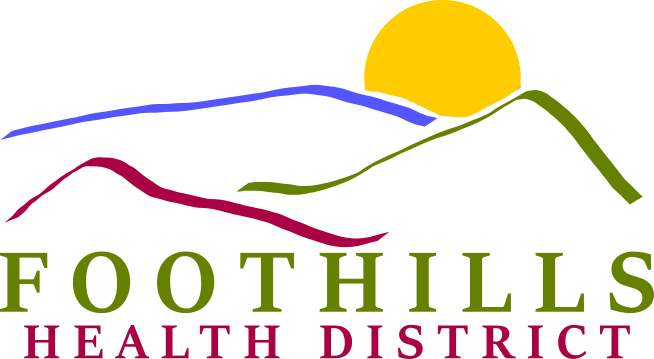By Jason Masters
Environmental Health Director

A
Q:
Hey Buddy, as the NC Mountain state fair approaches, my family and I have been wondering, “what is the number one thing that makes you question whether or not to eat at a food vendor at the fair?” I am planning on taking my grandkids, and I want to make sure I choose the safest fried turkey leg vendor.
-Jim W.
A:
Hi Jim, thanks for writing in. That’s a great question, and perfect timing for the upcoming fair. Also, I’ll bet you didn’t know that September is Food Safety Awareness Month! Now for us “in the biz”, every month is food safety awareness month, but it’s great that we have a special time of the year dedicated specifically to food safety. You know, I see a lot of food prep, and I see a lot of violations. Lots of things make me cringe, but there IS one thing that shakes me to the core…
But before I can answer that question, you have to understand a little about what a health inspector does at the fair, and how a food vendor inspection works. It’s a little like a Quantum Leap episode…We leap from booth to booth, putting things right, and hoping each time that our next leap will be our last… (Oh Boy…) When we go to the fair, our initial visits are to issue each food vendor a temporary food event (TFE) permit. Before we will issue that permit though, a laundry list of items have to be in place, including food thermometers, sanitizer, ability to wash, rinse and sanitize equipment, hair restraints, handwashing stations, hot and cold holding equipment, and the ability to store food where it will not be tampered with. Those permits are required to be displayed in the vendors booth. I know that if I see that permit, then at least the basic requirements have been met, so that is the first thing I look for when choosing which crinkle fries booth I visit. Next, I look at employee hygiene. Now don’t get me wrong, I love to see a simple grilled cheese sandwich slapped together with mounds of butter and thrown on the grill, but if the person doing the slapping isn’t wearing gloves, I stop right there. I am always astonished that bare hand contact with ready to eat food still occurs. Bare hand contact with ready to eat food is the number one thing that grosses me out. Now, you might say, “But Jason, you’ve been to my house several times when I’ve cooked and I touch food all the time! You’ve never said a word about it!” Well, Jim, that’s true, but you aren’t selling food to the public, you aren’t employing a kitchen full of people that may or may not be sick and are only coming to work because they need the paycheck, you are pretty good about washing your hands, and you aren’t sick.
Alright, now that that’s cleared up, let’s talk about what bare hand contact really means. Obviously, it means no contact with ready to eat foods without the use of gloves, utensils, or some other barrier. What is not said so much, is the organisms that we are trying to prevent. Now, I’m a health inspector, not a microbiologist, so I’m not going to get into the whole gram positive, gram negative, rod, flagella thing. That stuff is for identification. It’s important, but that’s not what I’m here for. I’m concerned with where these little buggers are going to grow, and what they are going to do to you. Bare hand contact with ready to eat food is the prime vector for pathogens that rely on the fecal-oral routes of transmission. We’ve talked about that before in previous articles, so I’m just going to lay it out here… Fecal-oral routes of transmission mean that you eat some amount of a pathogen that was shed in someone’s (or something’s) feces. Its gross, but it’s just that simple.
You may remember me talking in previous articles about the “Big 5” foodborne pathogens. Now there’s not going to be a quiz about this, but a good way to remember the Big 5 is to use the acronym *HENSS*.
-Hepatitis
-E. Coli
-Norovirus
-Salmonella
-Shigella
Now you are probably wondering, “What’s so special about these 5? There are hundreds of pathogens that can make me sick!” That’s true, but these 5 share some common traits. They all can make you sick from low doses, they all infect your gut after you eat them, and they are all shed in feces.
So, why does bare hand contact with ready to eat food make me stop on a dime? BECAUSE I DON’T KNOW WHERE YOUR HANDS HAVE BEEN! Did that guy wash his hands after coming out of the Port-A-John? Most of the ones I’ve seen don’t have sinks built in. Did he wash his hands before chunking those beef patties between those two Krispy Kreme original glazed doughnuts? Did that sweet old lady wash before she so lovingly pulled that bacon wrapped corn out of the fryer? What about that dude selling the pickle dogs? (It’s a hollowed out pickle with a hot dog shoved inside and then, of course, deep fried…) Did he wash before he slathered that dog in mustard and handed it over with a side of six feet of ribbon fries?
So to answer your question Jim, bare hand contact is the number one thing I look for when choosing where to eat. And I don’t just mean at the fair. Take a good look around the restaurants you visit, and make sure you are getting safe food. If you see someone touching the food that you are about to eat, think twice, and remember what we have discussed today. That fecal-oral thing is no joke.
Stay safe, and enjoy the fair!
-Big 5 (HENSS)

